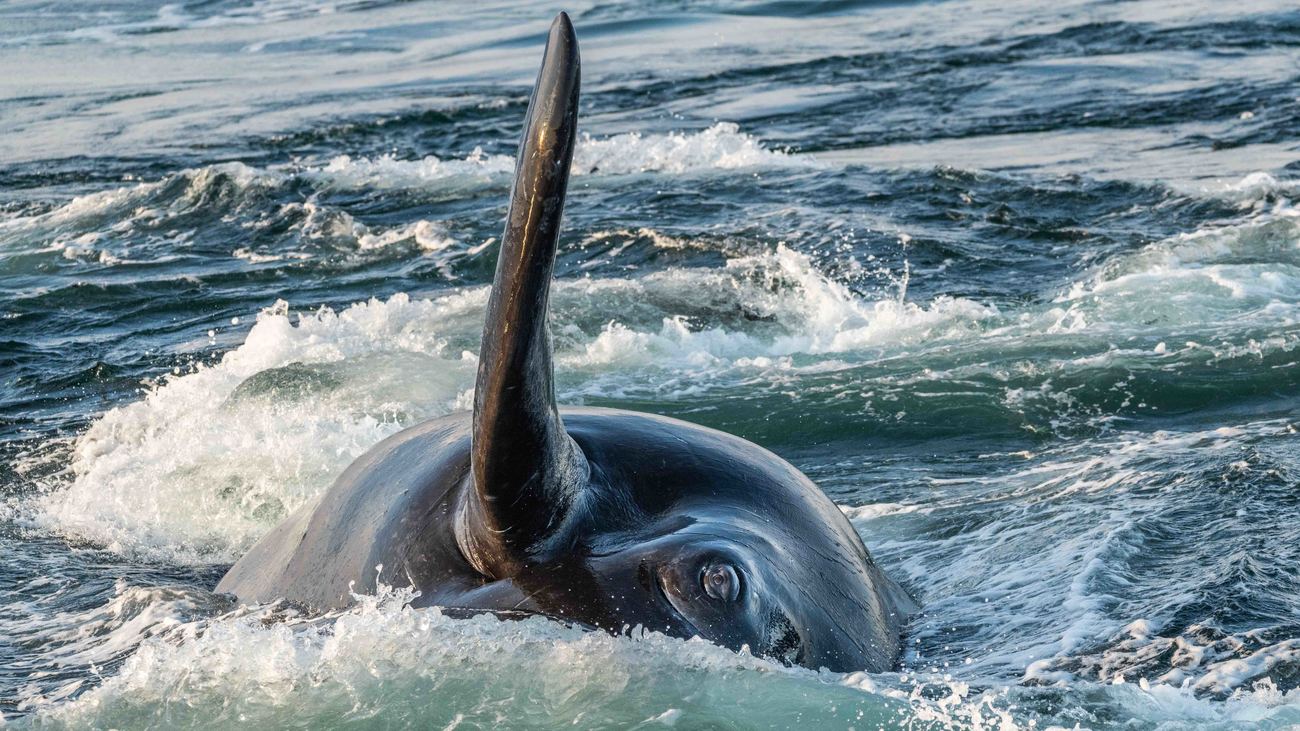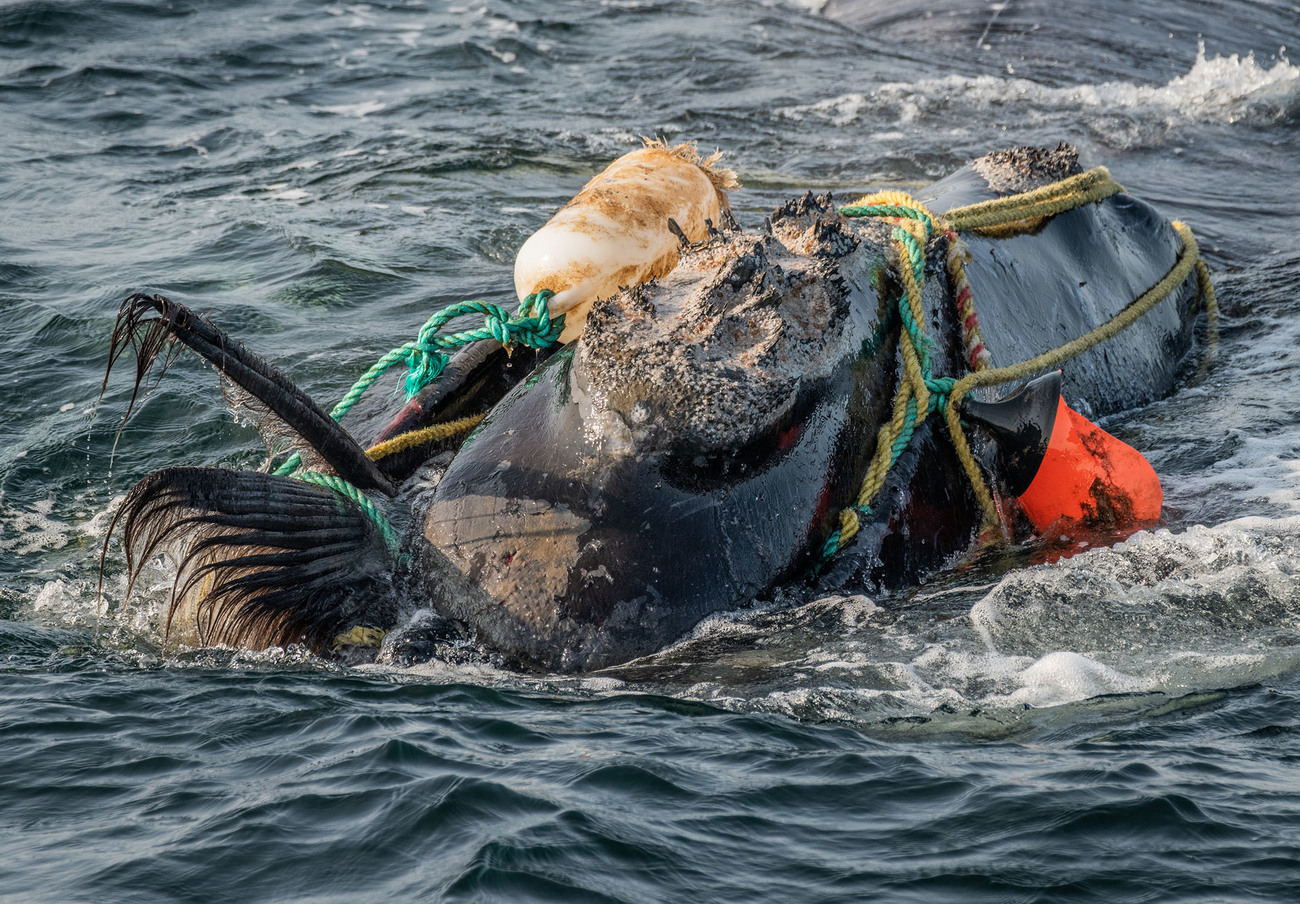Saving the North Atlantic right whale - North America
Don't fail our whalethe North Atlantic right whale's fight for survival
the North Atlantic right whale's fight for survival

The tale of the North Atlantic right whale is one of perseverance. Despite brutal commercial whaling over the last century, the right whale miraculously survived to modern times—but the fight isn’t over yet. Today, the North Atlantic right whale faces its most critical dangers in the new form of entanglements in outmoded commercial fishing gear and vessel strikes. With fewer than 360 individuals left, it’s a race to save the North Atlantic right whale before extinction itself strikes.
The early days of whaling
The North Atlantic right whale’s trouble started in the early 11th century when the Basques began hunting the species in the Bay of Biscay, off the coasts of France and Spain. Noted as the “right whale to hunt” due to its slow pace, thick blubber, and a tendency to float when harpooned, the right whale became an easy target for whalers. Throughout the 1500-1800s, whalers turned to North America and hunted these whales along the east coast towards Canada. By the 1850s, the United States had become the leading whaling country. New Bedford, Massachusetts, became one of the richest ports in the world, importing whale oil for lamps and baleen (the fibrous structures inside the whale’s mouth) for corsets and parasols. By the early 1900s, whalers had hunted the North Atlantic right whale almost to extinction.
In 1935, the League of Nations created the Convention for the Regulation of Whaling (CRW) and banned the commercial hunting of North Atlantic right whales. To further manage dwindling whale populations, the United States and 14 other countries created the International Convention for the Regulation of Whaling in 1946. The new agreement established the International Whaling Committee (IWC) as the official ruling group, and in 1986, the IWC banned all commercial whaling for member countries.

A species dying from entanglement and ship strikes
Canada and the United States may be far from their days of hunting right whales, but the species continues to face a crisis. In 2019, a scientific research paper led by IFAW’s Dr. Sarah Sharp and a multi-agency team of researchers revealed the startling truth of right whale mortalities. For all cases from 2003-2018 where death could be definitively determined, 90% of the whales died from entanglement or vessel strike. Today, there are fewer than 360 right whales left, of which only approximately 100 individuals are reproductive-aged females.
Hidden by the ocean’s depths, most whale entanglements go unseen—but the realities are gruesome. Weighed down by hundreds of pounds of rope and abandoned gear, entangled right whales struggle to swim and feed. The ropes dig deep into the whales’ skin, tightening around organs and causing deep lacerations that further limit movement. All too often, the whales succumb to starvation or drown from physical exhaustion.
Vessel strikes pose another critical danger to these slow-moving giants. Unable to escape the path of speeding ships, right whales are usually killed by collisions with vessels. Scientists performing necropsies (animal autopsies) on washed up right whales have seen amputated tails, jaw fractures, and broken vertebrae all as a result of vessel collisions. The likelihood of striking a right whale decreases drastically when ships travel at a speed of 10 knots or less, making ship speed reductions one of the easiest ways to prevent injury to these whales.
The promise of ropeless fishing gear and whale-safe lobster
Vacationers and beachgoers love their lobster…boiled and dipped in butter, that is. But little do they know that their tasty meal may be contributing to the death of a North Atlantic right whale. How so, you ask? Traditional lobster traps have a rope that connects the device on the ocean floor to buoys on the surface. These vertical ropes in the water column create a maze that can easily entangle whales. To prevent entanglements, we need to remove these vertical lines from the water columns. And ropeless fishing gear does exactly that. Remote-controlled, ropeless technology allows fishermen to drop traps in the ocean and mark their location with GPS. When it’s time to collect the whale-safe traps, fishermen press a button that releases a rope and buoy for hauling.
To encourage fishermen to adopt ropeless fishing gear, we need incentives. This is where whale-safe seafood certifications come in. With the trend of consumers interested in the ecological impact of their food, research has shown that there’s a market for whale-safe seafood and consumers who would pay a premium for sustainably caught lobster. Fishermen who adopt ropeless fishing gear would be able to advertise their catch as “whale-safe” and profit by marketing to this new demographic of conscientious consumers. They would also be given special access to fisheries that are otherwise closed to traditional fishing during the right whale migration season. This is a huge incentive for fishermen who are often hit hard by lower catches during fishery closures.
Passing the SAVE Right Whales Act in Congress
To save the North Atlantic right whale, we need cooperation from conservationists, government, fishermen, shipping industries, and consumers: cue the SAVE Right Whales Act. First introduced in 2017, the bill forges a future for the North Atlantic right whale by allocating funding for the next 10 years towards research and sustainable solutions. Why spend so much effort to save one species? Whales, including the North Atlantic right whale, are large contributors to a healthy ecosystem below and above water. They recycle nutrients throughout the ocean and supply the excrement that phytoplankton feed on to produce more than half of the world’s oxygen. On top of its ecological importance, the North Atlantic right whale is iconic and has captivated people of all ages for centuries with its grace and intricate social bonds. We can’t let this species go extinct.
How you can help save the right whale
We need everyone’s help to save the North Atlantic right whale–and that includes you.
- The first thing you can do is easy: talk about the issue. The majority of the public has never heard of the North Atlantic right whale and is unfamiliar with the current crisis. Talk to your friends and family and go a step further by sharing IFAW’s right whale articles and social media posts to build public awareness.
- Next, if you're a US citizen, please contact your member of Congress and ask them to support the SAVE Act. This bill is our fighting chance to save right whales and we need all of the support we can get.
- For those living in coastal communities, help spread awareness about the importance of reducing ship speeds.
- As a consumer, join us in making an impact through your purchases by choosing sustainably-caught seafood.
The actions we take today will determine the future of the North Atlantic right whale. Let’s make them count.
Related content
Every problem has a solution, every solution needs support.
The problems we face are urgent, complicated and resistant to change. Real solutions demand creativity, hard work and involvement from people like you.